Math + teens + practice = a winning competition
Competitive mathletes emphasize the joy in solving problems
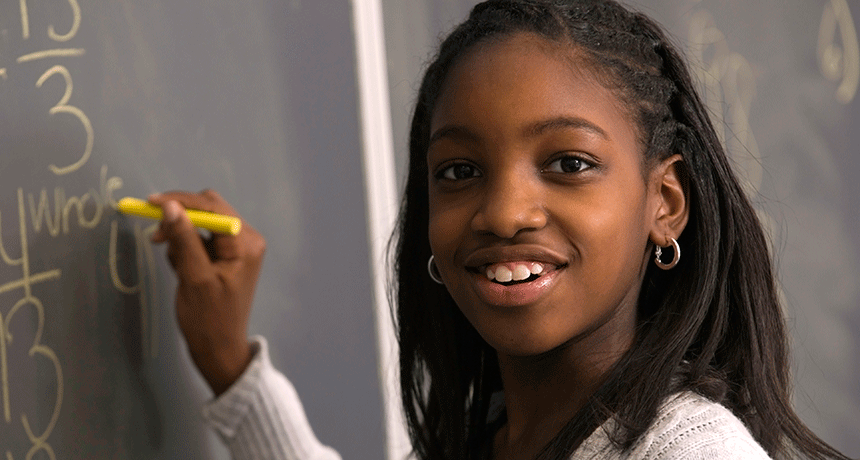
Math offers a different way to look at the world and solve problems. Like athletes, mathletes can compete, even from young ages, to win medals and have fun — sometimes in exotic places.
isaiahlove/iStockphoto
Dancing, shouting countdowns, games where students pretend they are characters from the movie Toy Story. These activities are probably not a regular part of your math class. However, fun is the focus of a yearly math event for middle schoolers at Salisbury University in Maryland. And these kickoff activities are designed to get kids “jazzed up” about the rest of the day’s activities, says Randall Cone. A mathematician and computer scientist at the school, he runs the event.
Those games are just the lead up to the main event: a brain-bending math competition. Called the American Mathematics Competition 8, or AMC 8, its name comes from the fact that it’s open to students in grades eight and under. During AMC 8, students from across the United States take part in events like the one at Salisbury to solve 25 middle-school math problems. They’ve got just 40 minutes to do it.
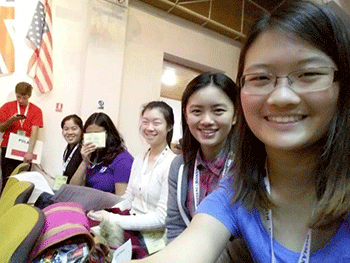
Math may not sound like fun to some people, but competitions like AMC 8 can be. “The problems are just so unique,” says Marvin Li, 14. “You have a sense of satisfaction when you solve a problem that’s really hard.” He participated in the AMC 8 event at Salisbury University for the first time in 2015. Since then, he’s moved on to the next level: the AMC 10.
Events like these can be more than just an exciting day for the participants. Competitive math holds the power to change lives, notes Cone. Kids from different backgrounds come to such events. And for some, it will be their first chance to discover their talents and interest in math, he says. Nationwide, he claims, AMC 8 is an opportunity for “hundreds of thousands of kids to fall in love with math and science.”
Competition fever
As with athletes who compete in soccer or gymnastics, many mathletes get excited about competitive problem-solving. In the United States, they might compete in increasingly difficult levels of the AMC program, which is run by the Mathematical Association of America (MAA). This group supports math enthusiasts ranging from students to college professors. A few students will go on to compete on the international level, in a high school competition known as the International Mathematical Olympiad (IMO). There’s a similar competition that’s girl’s-only. It’s known as the European Girls’ Mathematical Olympiad (EGMO).
Students who do well in lower levels of the AMC programs earn certificates. Some earn spots to compete in three invitation-only competitions. And each year, a handful of young math whizzes win trips to compete at international events. Brazil, Hong Kong, Switzerland and Romania have hosted recent ones.
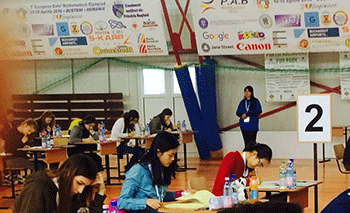
However, the true reward comes from gaining new math knowledge and solving new problems. Teasing apart those puzzles makes every math competitor a winner.
For aspiring mathletes, a first step is finding a school or nearby university that hosts the AMC 8. Cone started this event at Salisbury because many schools can’t afford to host their own. Some universities, such as his, now allow young competitors to take part at their campuses.
But kids will never do that if it’s not on their radar screens. And many students and teachers still don’t know about AMC 8. So each year, Cone reaches out to teachers and staff to increase the event’s visibility. Three out of every four (or 75 percent) of the people he contacts typically have not heard of AMC 8 before he invites them to check it out at his university.
Once students learn about a competition and register, they must take the next step: prepare. Young athletes focus on developing their physical strength and stamina. Similarly, mathletes must strengthen their minds by solving challenging problems. Teachers, parents, math club leaders, tutors and other mentors can help out by coaching beginning mathletes.
(Story continues below video)
But that’s not essential, Marvin notes. He and many other mathletes started by training solo. Marvin prepared for the 2015 exam by looking at a few practice tests that he downloaded off the internet. Still, when he competed that year, he was a bit rattled. “The topics [on the AMC 8] were a lot more in-depth” than what he’d learned at school, he found.
AMC 8 math problems involve formulas, such as ones related to triangles. Marvin might have memorized and learned how to use the formulas in school. But when he needed to use a formula on the AMC 8, he had to do more than plug in numbers from the problem. He first had to study the information that he was given and problem-solve ways to get that information into a more useable form. Only then could he use a recalled formula to solve the problem.
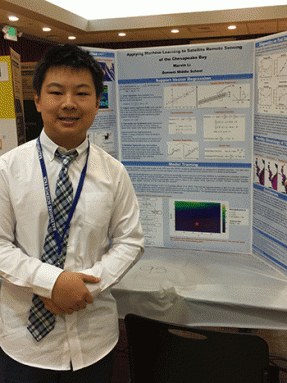
When he decided to again take part in the AMC 8 in 2016, Marvin realized he needed to prepare more. So he adjusted his strategy. He practiced one hour each day for nearly three months. He carefully solved problems on every practice test he found online. When he encountered a topic he was unfamiliar with, he searched the internet for information. And if he got stuck on a problem or topic and couldn’t find what he needed, he asked his parents for help.
All of that hard work paid off. During his second time at the AMC 8, he placed in the top one percent of all competitors.
In 2016, more than 100,000 students (mostly from the United States) took part in that event. Those who perform in the top one percent are encouraged to advance to the AMC 10.
Exceptional performances like Marvin’s are exciting, Cone says. But the event is more about getting as many students as possible competing at math and solving problems. When students show up and do their best, they’ve all won.
Critical thinking in action
AMC 8 is designed to cover the math topics taught in middle school. These include probability, estimation, reading and interpreting graphs, percentages and elementary geometry. Marvin and other top performers excel by learning to look at the exam’s complex problems from different perspectives. This requires thinking critically, Marvin notes. This mindset is important and useful to problem-solving both inside and outside of math.
Critical thinkers strategize while solving math problems. They read a problem statement, then look at the information they’ve been given and scout for clues to what they need to find. Next, they consider the formulas and other mathematical tools they’d like to use. Finally, they solve the problem step-by-step using the tools they’ve chosen.
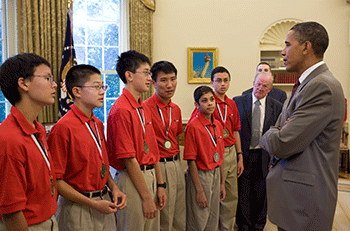
Along the way, they check-in with themselves about whether their strategy is working. If not, they might need to make a change. Finally, once critical thinkers find an answer to a problem, they go back, check their work for errors and think about whether their answer makes sense.
Competitors have a limited amount of time to solve hard problems. So speed is important. As competitors become better at critical thinking, their speed will increase.
The urge to solve
Young mathletes often enjoy puzzles. Many become hooked on competing after they see that this empowers them to become better problem-solvers. Marvin, for instance, had always been interested in problems and the challenge of building objects with Legos.
David Stoner, 19, watched his older brothers compete in math before he tried it himself. “It looked like a lot of fun,” he notes. He had always loved solving brain teasers. “Probably the most surprising thing about the first competition was the exhilaration and adrenaline rush, which came with the real thing!” he recalls.
Demi Guo, 19, emphasizes the rewards that come from tinkering with a problem and arriving at a solution. There are both “excitement and delight after thinking about it for a long time,” she notes.
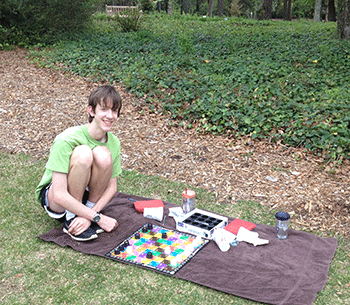
Both Demi and David competed as international mathletes. As at the true Olympics, students in the IMO or EGMO can earn gold, silver and bronze medals for their individual scores. Each participating team also receives a score. It is tallied from the total individual scores of its team members.
Demi competed in the 2016 EGMO in Bușteni, Romania. She spent seven years training before she was chosen as one of just four girls to represent the United States at the 2016 event. Her team won silver, and she won an individual bronze. EGMO was “a great opportunity to know other girls from all over Europe, or even around the world, who also love math,” she says.
In 2015, David was a part of the U.S. IMO team that won a gold medal in Chiang Mai, Thailand. He also won an individual gold!
David, too, had spent hours each day in training. He worked on problems over a bowl of cereal at breakfast. He brought practice problems to school with him so he could solve them when he had free time. He used chess and other strategy games to strengthen his problem-solving skills. This game play also gave him a chance to take a break from math and avoid burnout, he points out.
Math life after competitions
Math is a powerful tool that’s used in many fields. Experts use math to make safer cars, to design faster roller coasters and to propel rocket ships into space. Math also is used to find better ways of controlling infectious diseases. Some researchers are even using math to protect endangered species from poaching.
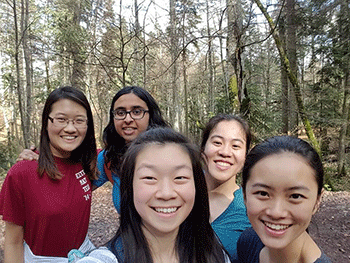
Marvin, Demi and David are all connecting their interest in math with computer science. David and Demi are now studying the subject at Harvard University in Cambridge, Mass.
A community of math enthusiasts supports these competitions around the world. Those people have been important to David throughout high school and college. People he met at competitions are now his friends. He’s also learned about research opportunities and other competitions through other young math lovers.
That’s why David now is giving back to his math community. He’s served as an assistant instructor for the Worldwide Online Olympiad Training program. He’s also created problems for IMO team-selection tests.
Math is “an adventure,” David says. He hopes to one day teach it and share that excitement with his students.







